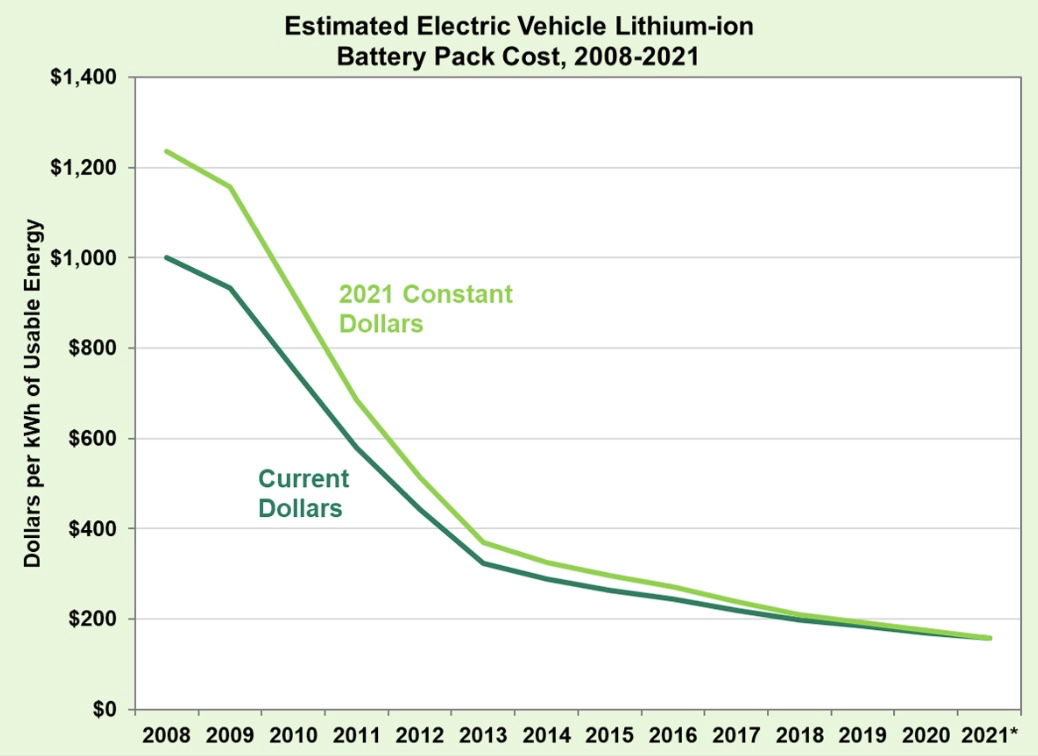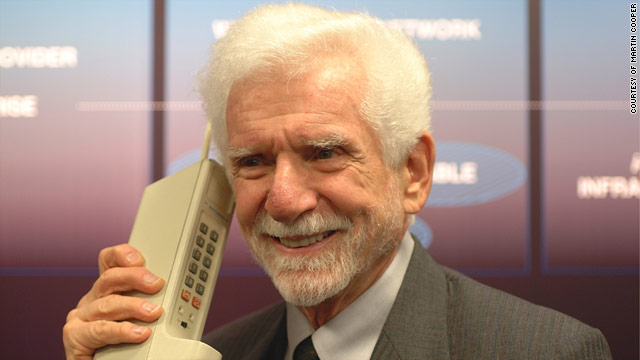How did we ever get to the point where cellular phones dominate over land line phones? Cell phones were such a dumb idea!

Think back to the original mobile phone, the Motorola DynaTAC 8000X. In 1983 it cost $3,995 ($11,205 in 2021 dollars, after adjusting for inflation*). Monthly network access cost $45 ($126, adjusted) and included no airtime. That was an additional 45¢ per minute ($1.26 per minute, adjusted) and that did not include long distance service or roaming charges. (For those too young to remember “roaming,” that’s when your phone left an area serviced by your mobile service provider’s network and depended on a competitor’s network. Roaming was expensive!) Even without roaming, that original cell plan would have cost $456 per month ($1,278 adjusted), even if you only charged it once per day and used it, until its battery died at 30 minutes. It was obviously a toy for the wealthy.
But still, it got built and people bought them.
That first phone was huge! Without its antenna, it measured ten inches tall. With its antenna, it was close to a foot and a half tall and weighed about 1.75 pounds! Who would want to carry a brick like that around???
But still, it got built and people bought them.
Battery life was terrible, by today’s standards. A full charge required about ten hours and only provided 30 minutes of talk time. Motorola offered a faster desktop charger, capable of recharging in an hour, but the battery got very hot, when recharged that way. In fact, charging that way sometimes shorted the battery out, rendering it useless. Those batteries also had a problem known as “memory,” that required their charge be completely drained and then fully recharged or the battery’s capacity could be reduced, as it lost its capacity to fully recharge.
But still, it got built and people bought them.

I acquired my first cellphone in 1988 or 89. It was a Motorola “bag phone.” It had a large, purse-like bag that contained the battery, antenna and most of the electronics. As you may know, I am an early adopter of new technology, so I felt like the cool kid, walking around with that bag hanging on my shoulder.
Cell towers only existed in large cities because it was thought that only urban businesspeople could afford such a luxury. Why would anyone care? Who needed a cellphone, when there were pay phones at every gas station, convenience store, restaurant, hotel and freestanding on many street corners. I can remember driving from that Dallas / Fort Worth area to Houston and being negatively impacted by the lack of cell towers. I would usually lose my network connection for about three hours of the four hour trip. Over time, the cellular networks expanded into rural areas, first along major interstate highways and then, even into small towns, giving their residents the same convenience and freedom the rest of us had been experiencing for years. (If you know where I can find images of cellular coverage maps, over these years, please let me know. I’ve been searching to no avail.)
But still, it got built and people bought them.
What the hell happened?
People decided they liked the freedom of not having to be near a landline-based phone, when waiting for an important call. They bought these phones for just that one use case (and maybe the “cool factor”). These early models did not have the ability to send text messages or take photos, or play music, or surf the web, or send and receive emails, or keep calendar appointments, or make calculations, or make video calls, or run millions of apps as we commonly do today. People still felt the need for a landline phone at their home for Internet access, burglar alarm connection to security services or sharing their location with 911 emergency services.
What the hell happened?
Mass adoption brought about economies of scale. Prices dropped to the point that the service providers gave mobile phones away if you signed up for their service. The electronics kept shrinking until the phones became so small they could be clipped to your belt or put in your pocket. Roaming charges became a thing of the past, as networks cooperated with one another. Long distance charges went away as well. Then, on January 9, 2007, Steve Jobs took the stage to show the first iPhone to the world. No longer would cellphones be free. Apple planned to charge $499 ($676 adjusted) for the device. Microsoft President Steve Ballmer laughed at the idea of “the most expensive phone in the world.” Later, he came to realize it wasn’t Apple that messed up…

Eventually, all the services, that depended on a wired phone connection at home, made the connection via fiber optics or yes, cellular connections. Today many people use their cellphone as their only phone at their residence, as well, resulting in the connected world, in which we live today.
The same story exists in the world of home entertainment. Videotape recorders, laserdiscs, DVDs, Blu-Ray discs, flat-screen HDTVs, streaming services with built-in video recording capabilities, all the way to videos on our smartphones could not have been imagined, back in 1970. Who could have envisioned where that first $2,495 Sony Betamax ($12,864 adjusted, television included) would take us?
So why am I, a guy who usually writes about electric vehicles, writing about cellphones and video recorders? Because, EVs have already been around for thirteen years. We are at the end of the beginning of the age of electric transport. Cross-country is already possible in an EV, as many, many YouTube videos have shown, with the existing charging infrastructure. We still have different charging connectors (Beta, VHS…) but CHAdeMO appears to be approaching its Betamax ending and adapters exist to connect disparate plugs. The networks are starting to merging their data/networks for end-user convenience and reliability. Battery technology continues to evolve, with many saying solid state batteries are just a few years away.
If your opinion has been that electric vehicles are only for the wealthy, don’t have enough range, or are not practical, you may want to give Steve Ballmer a call. The most valuable company in the world (by market cap) is Apple (a smartphone manufacturer). The most valuable auto manufacturer is Tesla Motors.
As with cellphones, we really cannot imagine all the businesses that will spring up around electric transport, but we can easily see there will be many, many opportunities.
America can lead, follow or get the hell out of the way (I’m looking at you, Senate Republicans), because there will be many who can see the opportunity and who will act on it. For the sake of our future, I hope it’s us, leading the way.
- Based on the CPI Inflation Calculator on the U.S. Bureau of Labor Statistics website.



